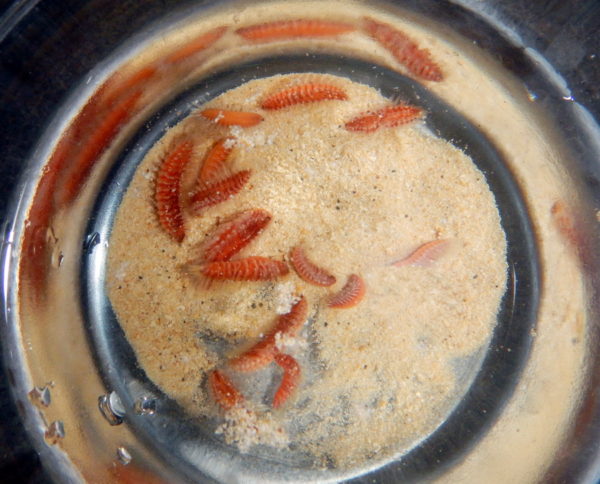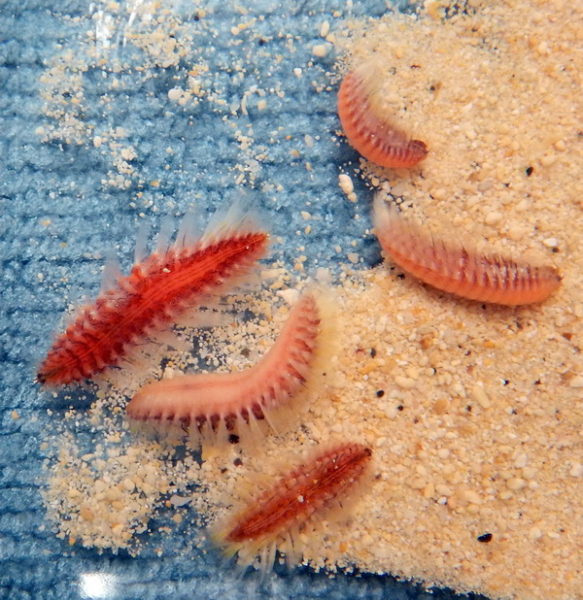June 12, 2020

My glass dish of beached fireworms. ©Susan Scott
In the early morning shorebreak of Lanikai Beach yesterday, my friends and I found clumps of inch-long red and pink wormy things. It was hard to distinguish the creature’s features, because in being washed ashore, they had rolled up into sand-covered balls.
My friend’s empty coffee cup served as a collection container, and soon, I was home with a glass dish of seawater, sand, and about 20 of the organisms. To my surprise, several were still alive, and began crawling on their bristly feet.
I sent photos and a short video to UH marine worm expert, Dr. Julie Bailey-Brock. Her return email listed two generic possibilities, Pherecardia or Eurythoe. To those, she added, “…or just call them fireworms!”
Fireworms it is.
The ocean hosts thousands of worms called bristleworms, their bodies consisting of segments or rings that each end in bunches of bristles like tiny whiskbrooms. Bristleworms’ scientific name is Polychaeta, meaning many hairs.
Fireworms are their own family (Amphinomidae) of bristle worms. Hawaiians named fireworms aha huluhulu, meaning hairy cord.
Hawaii’s fireworms range from 2-to-8 inches long, crawling on the ocean floor, or hiding in cracks of the reef. These worms are mostly predators, eating crabs, snails, goose-neck barnacles, and other worms. Fireworms are also recyclers, eating dead animal flesh.
Most bristleworm bristles are harmless, but the well-named fireworms are packing. Their sharp, brittle bristles contain a toxin. When human hands touch the bristles, they penetrate soft skin and break off, causing a prickling, burning, itching, and/or numb sensation.

Fireworm bristles look soft, furry, and harmless. Don’t believe it. ©Susan Scott
In most people, this usually wears off in a few hours, but a rash may form and persist. Sometimes you can see silvery hairs sticking out of a fireworm sting, but often the bristles aren’t visible. In any case, it’s impossible to remove bristles from under the skin. Like sea urchin spines, they’re barbed and too breakable to pull out.
I suspected the identity of the shipwrecked critters, and in collecting them, was careful not to touch their fuzzy feet.
By the time I took my photos and showed the baby worms to fellow beach walkers, my fiery pets had all died. But I’m hoping to find more. Julie writes that this is bristleworm spawning time, which explains their presence on the beach. The strong tradewinds likely created currents that overpowered the small worms, and deposited them ashore.
When I find stranded marine animals, I try to put them back, but there was no hope for that with the current gusty, onshore winds. Instead, the fireworms are now ambassadors of their species, revealing one more remarkable life form in the remarkable ocean that defines our remarkable state.